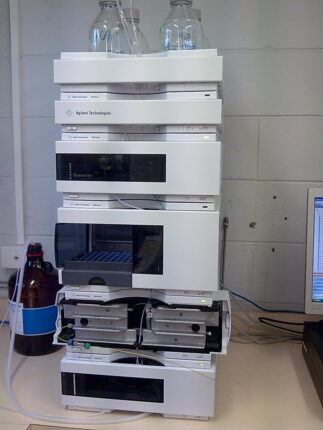
Why Mr. Spock would NEVER make a good planner!
In this blog I will briefly explore why objective workload estimation is so critical for planning work in the upcoming weeks by exploring the characteristics that would make Star Trek’s Mr Spock a terrible planner.
One of the tricks used by the screenplay writers of the 1960s Star Trek TV series to show that Mr. Spock was an intellectual badass was to have him make calculations to a ridiculous degree of accuracy. This ludicrous precision made Mr. Spock legendary, but we doubt he would make a good planner. Why? Well, when we talk to people who are responsible for planning the workload of their team(s), the problem they most often face is the quality of the estimated upcoming workload (which in turn makes it difficult to see whether there will be enough team capacity to perform the work).
One of the most common causes is that requesters (with limited knowledge of the ins and outs of the requested task) are estimating how much time the performers will need. But as we’ve seen time and again, if you have different people estimate the same task time, you’ll end up with just as many different estimations. Individual estimations will always be biased by:
- human nature (optimists versus pessimists)
- the persons place in the hierarchy (the big classic: the boss who doesn’t know the job in detail will always underestimate the time it takes to accomplish a task)
- the person’s own experience (I’ve seen this before, I know how long it takes)
We came up with a different approach to making an objective estimation for the future workload of your delivery teams. It’s based on a quote that Mr. Spock would despise, but is essential for a good planner:
“It’s better to be roughly right than precisely wrong”
This quote is attributed to the economist John Maynard Keynes, and was later paraphrased by investment icon Warren Buffett. Not that we advocate either of their theories, but the phrase itself holds a lot of truth when it comes to workforce planning. While perfect precision is desirable for any research effort, its unachievable, unpractical, and unnecessary. All too often, efforts get stymied in a quest for perfect data, the perfect metric, or the perfect method—what a lot of people call “planning paralysis”.

Want to optimize your lab resource utilization?
Take your lab to the next level of operational excellence with our white paper:
5 principles to improve lab performance using Lean Lab strategies
4 steps to an objective workload estimation
The secret to a good workload estimation for the coming months lies in a clear definition of the roles.
1.WHICH SERVICES can be requested?
Let the performers list all the services they can deliver

Let the people who perform the work make a list of standardized services they provide to either external or internal customers. Executing teams are best placed to figure out all the ins and outs that come with delivering a service. Examples: For laboratory teams, these can be the tests they conduct; for people in regulatory affairs, submission types they perform; or for R&D scientists, typical experiments.
2. HOW LONG will it take?
Let the performers estimate the time they will need to perform those tasks

Once the teams standardized services have been listed, the next step is to let the performers estimate the time the task will take. Hey, wait a minute, we hear you think. What’s that about standardized tasks?! We can’t standardize. The work is different every time! Thats where the famous Keynes/Buffett line comes in: Better be roughly right than precisely wrong. It’s key to determine the right level of detail and split the services up accordingly.
3.Which services are NEEDED?
Have the requesters choose the services from the list

The requester can indicate what services they need and when. And that’s all the requester needs to do. They don’t have to estimate how long the task will take, only request what they need and when.
4. Do we have the CAPACITY to do this job?
Check whether the teams have the available capacity to perform the work

Now that the requested services are known and the services estimated, its easy to calculate the workload needed in the coming months. Based on this workload estimation, you can start to check whether your teams have the capacity to deliver the requested services.

Want to optimize your lab resource utilization?
Take your lab to the next level of operational excellence with our white paper:
5 principles to improve lab performance using Lean Lab strategies
Resource planning
The Binocs resource planning tool is built around the concept of standardized services and improves the quality of team workload estimations. But a fool with a tool is still a fool. When setting up the services in Binocs you have to find the right level of detail and embrace some impreciseness—so much for your odds, Mr. Spock. The key is to be moving forward and making decisions, getting feedback and continuously learning, and all the while getting closer to the prize. Embrace uncertainty and discover how Binocs resource planning can help you master demand & supply planning—with a free demo.
More about planning with Binocs
-
Set up your lab’s “mission control center” using the Binocs resource management system as a form of analytical method validation software!Read more
-
4 KPI dashboards that every QC lab should use
KPI dashboards in QC are crucial as they enable lab personnel to see relationships between different metrics and make informed decisions about how to optimize lab performance. Based on…Read more -
Six Steps to Optimize the Resource Planning in Your Quality Control Lab
How lean is your QC lab? Can you easily cope with today’s complexity and volatile demand? More and more QC labs are being asked to constantly increase analyst and…Read more
Geert Vanhove
Geert has over 30 years of experience in supply chain and quality operations consulting. He began his career as a product manager for a MES/LIMS application at Compex (later acquired by Siemens). After co-founding Bluecrux, he dedicated his expertise to designing the first iteration of Binocs which, under his stewardship, has since gone on to become the market leading planning and scheduling solution for labs.





